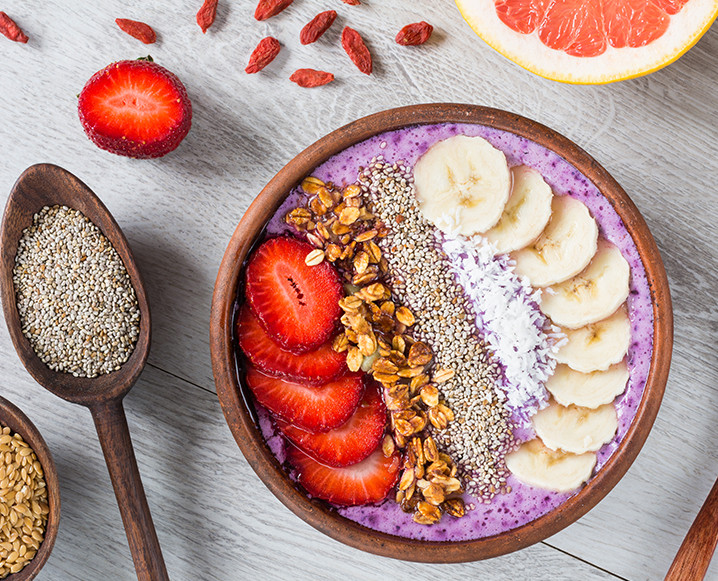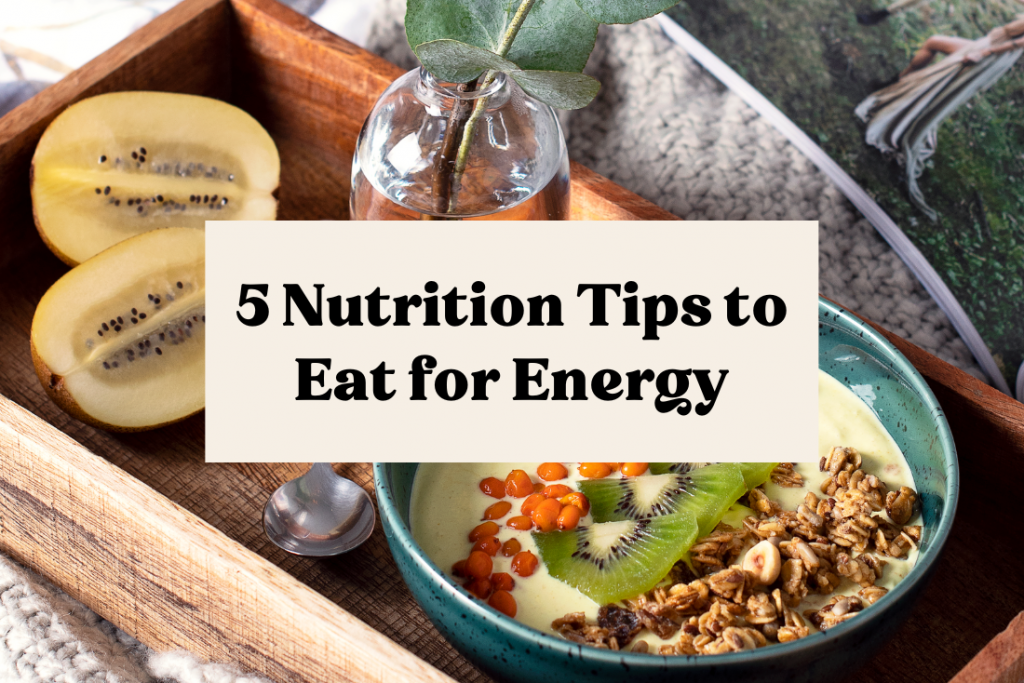Understanding how to eat for energy is essential for maintaining vitality and focus throughout your day. The right nutritional choices can significantly impact your stamina, mental clarity, and overall well-being, enabling you to perform at your best in both personal and professional pursuits.
This comprehensive guide explores the fundamental principles of fueling your body effectively, highlighting key nutrients, meal planning strategies, foods to avoid, and lifestyle habits that support sustained energy levels. By applying these insights, you can optimize your diet to feel more energized and resilient every day.
Fundamentals of Eating for Energy

Maintaining consistent and sustained energy levels throughout the day begins with understanding the foundational principles of proper nutrition. The way we fuel our bodies impacts our vitality, productivity, and overall well-being. By focusing on balanced intake and strategic meal timing, individuals can optimize their energy reserves and avoid common pitfalls such as energy crashes or fatigue.
Effective eating for energy involves a deliberate choice of nutrient-dense foods, appropriate portion sizes, and timing that aligns with the body’s natural rhythms. Recognizing the roles of different macronutrients—carbohydrates, proteins, and fats—in energy production enables informed dietary decisions. Combining these principles with mindful meal scheduling ensures a steady flow of energy, helping to sustain daily activities and maintain focus.
Principles of Fueling the Body for Sustained Energy
To optimize energy levels, it is essential to focus on nutrient quality, meal regularity, and balance. Prioritizing whole, minimally processed foods rich in vitamins, minerals, and fiber supports metabolic health and prevents energy dips. Incorporating a variety of food groups in each meal ensures that the body receives a comprehensive array of nutrients necessary for efficient energy production.
Meal timing plays a critical role in maintaining consistent energy. Regularly spaced meals and snacks help regulate blood sugar levels, preventing peaks and crashes that can impair focus and stamina. For most individuals, consuming a balanced breakfast shortly after waking, followed by mid-morning and afternoon snacks, supports optimal energy distribution throughout the day.
Influence of Macronutrients on Energy Levels
Macronutrients are the primary sources of energy for the body, each contributing differently to overall vitality:
| Nutrient | Food Sources | Benefits | Recommended Intake |
|---|---|---|---|
| Carbohydrates | Whole grains, fruits, vegetables, legumes | Provide quick and sustained energy; support brain function and physical activity | 45-65% of daily calories; focus on complex carbs over simple sugars |
| Proteins | Lean meats, dairy, beans, nuts, seeds | Support muscle repair, immune function, and satiety; provide steady energy release | 10-35% of daily calories; distribute evenly across meals |
| Fats | Avocado, nuts, seeds, olive oil, fatty fish | Supply long-lasting energy; aid in hormone production and nutrient absorption | 20-35% of daily calories; prioritize healthy unsaturated fats |
Optimal energy is achieved through a balanced intake of macronutrients tailored to individual activity levels and metabolic needs.
Nutrient Sources and Their Energy Contributions
The following comparison highlights key nutrient sources, their benefits, and recommended intake to support sustained energy:
| Nutrient | Food Sources | Benefits | Recommended Intake |
|---|---|---|---|
| Carbohydrates | Brown rice, oats, sweet potatoes, berries | Rapid and sustained energy supply, aid in blood sugar regulation | Based on total caloric needs; approximately 45-65% of daily calories |
| Proteins | Eggs, chicken breast, lentils, Greek yogurt | Muscle maintenance, hormonal balance, prolonged energy release | 1.2-2.0 grams per kilogram of body weight daily |
| Fats | Olive oil, walnuts, salmon, chia seeds | Long-lasting energy, cell integrity, hormone synthesis | Adjust based on total caloric intake; focus on healthy fats |
| Additional notes | Prioritizing nutrient-dense sources over processed foods enhances energy stability and overall health. | ||
Meal Timing and Energy Distribution
Strategic meal timing is crucial for maintaining a steady energy flow. The body thrives on regular intervals of nourishment, which help stabilize blood glucose and insulin levels. Skipping meals or irregular eating patterns often lead to energy slumps, cravings, and decreased productivity.
For most individuals, starting the day with a nutritious breakfast sets a solid foundation. Consuming small, well-balanced snacks between main meals prevents hunger-induced fatigue and keeps energy levels consistent. Aligning meal timing with personal schedules and activity peaks ensures that energy demands are met effectively. For example, eating carbohydrate-rich foods before physical activity provides immediate fuel, while protein-heavy meals post-exercise support recovery and sustained energy.
Designing an Energy-Enhancing Meal Plan

Constructing a meal plan that effectively sustains energy levels requires careful selection and combination of nutrient-rich foods. An optimal plan balances macronutrients, incorporates a variety of food groups, and aligns with individual energy needs, preferences, and activity levels. Such planning not only promotes consistent energy throughout the day but also supports overall health and well-being.
Developing a meal plan focused on energy enhancement involves understanding how different foods contribute to sustained vitality, managing portion sizes appropriately, and ensuring proper hydration. Combining foods strategically ensures that the body receives a steady supply of nutrients needed for optimal energy output and mental alertness.
Procedures for Planning Balanced Energy-Boosting Meals
Effective planning begins with assessing daily energy requirements based on factors such as age, gender, activity level, and health goals. Incorporate a variety of nutrient-dense foods from all primary food groups—protein sources, complex carbohydrates, healthy fats, fruits, and vegetables. Prioritize whole, minimally processed foods to maximize nutrient intake and maintain stable blood sugar levels, preventing energy dips.
Use a structured approach to meal composition, ensuring each meal contains a balance of macronutrients that complement each other. Smaller, frequent meals can promote sustained energy, while portion control helps avoid post-meal lethargy. Planning ahead with a weekly menu allows for better shopping, reduces impulsive eating, and ensures consistency in energy management.
Combining Food Groups for Maximum Energy Output
Combining foods from different groups enhances nutrient absorption and ensures a steady energy supply. A balanced meal typically includes a source of protein, complex carbohydrate, and healthy fats. This synergy supports stable blood sugar, sustained energy, and improved satiety.
| Meal | Protein | Carbohydrate | Healthy Fats |
|---|---|---|---|
| Breakfast | Scrambled eggs (2 large eggs) | Oatmeal (1/2 cup oats) | Avocado slices (1/4 medium avocado) |
| Lunch | Grilled chicken breast (4 oz) | Quinoa (1/2 cup cooked) | Olive oil (1 tablespoon, drizzled over salad) |
| Dinner | Baked salmon (4 oz) | Sweet potatoes (1 medium, baked) | Chia seeds (1 tablespoon, mixed in salad or yogurt) |
| Snack | Greek yogurt (3/4 cup, plain) | Mixed berries (1/2 cup) | Almonds (12 pieces) |
In these meal examples, each combines proteins, complex carbs, and healthy fats to sustain energy over extended periods. For instance, eggs provide high-quality protein, oats offer slow-digesting carbs, and avocados supply beneficial fats—all working together to fuel the body efficiently.
Sample Meal Ideas with Ingredient Lists and Portion Sizes
Implementing varied but balanced meals ensures consistent energy levels. Here are detailed sample meal ideas designed for energy enhancement:
-
Breakfast:
Scrambled eggs (2 large eggs), whole-grain toast (1 slice), 1/4 medium avocado, a small handful of cherry tomatoes.“Combining protein, complex carbs, and healthy fats at breakfast supports sustained morning energy.”
-
Mid-Morning Snack:
Greek yogurt (3/4 cup, plain), mixed berries (1/2 cup), a sprinkle of chia seeds (1 tablespoon).“Includes probiotics, antioxidants, and omega-3s to maintain mental clarity and energy.”
-
Lunch:
Grilled chicken breast (4 oz), quinoa (1/2 cup cooked), steamed broccoli, drizzled with olive oil (1 tablespoon).“A balanced meal that provides protein, fiber, and healthy fats for mid-day vitality.”
-
Afternoon Snack:
Raw almonds (12 pieces), a small apple.“Healthy fats and natural sugars help sustain energy and curb hunger.”
-
Dinner:
Baked salmon (4 oz), roasted sweet potatoes (1 medium), sautéed spinach in olive oil (1 teaspoon).“A nutrient-dense dinner promoting recovery and energy replenishment.”
The Role of Hydration and Optimal Beverage Choices
Hydration is fundamental in maintaining energy levels, as water supports all physiological processes, including nutrient transport and temperature regulation. Dehydration can lead to fatigue, decreased concentration, and reduced physical performance.
Good hydration strategies involve consuming fluids regularly throughout the day, especially when engaging in physical activity or in hot environments. Incorporate beverages that contribute to hydration without excess sugars or artificial additives. Water remains the best choice, complemented by herbal teas or infused water with slices of citrus, cucumber, or mint for flavor variation.
“Optimal hydration involves drinking at least 8 glasses (about 2 liters) of water daily, with increased intake during physical exertion or in hot climates.”
Limit sugary drinks, energy drinks, and excessive caffeine which may cause energy spikes followed by crashes. Instead, opt for herbal teas, mineral-infused water, or low-sugar vegetable juices to sustain hydration and energy levels effectively.
Foods and Beverages to Avoid for Better Energy

Maintaining consistent energy levels throughout the day requires not only choosing the right foods but also avoiding those that can cause energy crashes. Certain foods and drinks, particularly processed and refined options, can lead to rapid blood sugar fluctuations, resulting in feelings of fatigue and sluggishness. Recognizing these foods and establishing healthier habits is essential for sustaining vitality and mental clarity.Many common consumables, especially processed snacks and sugary beverages, are designed to be quick sources of pleasure but ultimately deplete energy reserves.
When regularly consumed, they can lead to cycles of spikes and crashes in blood sugar, diminishing overall energy and productivity. It is important to identify these culprits and replace them with nourishing alternatives to support sustained vitality.
Foods and Beverages that Cause Energy Dips
Refined sugars and processed snacks are among the primary contributors to energy depletion. These foods typically contain high glycemic index ingredients that cause rapid increases in blood glucose levels, followed by sharp drops. This rollercoaster effect leaves individuals feeling tired, irritable, and sluggish.Other common culprits include sugary drinks like sodas and sweetened coffee beverages, which provide quick energy spikes but are often followed by a crash.
Highly processed fast foods, including fried items and packaged baked goods, often contain unhealthy trans fats and refined carbs, which impair metabolic health over time. Additionally, excessive caffeine intake, especially when consumed late in the day, can disrupt sleep patterns, leading to decreased energy levels during waking hours.
Beyond diet, certain habits can deplete energy reserves, making it harder to maintain alertness and vitality. These habits include:
- Skipping meals or irregular eating schedules that cause blood sugar fluctuations
- Inadequate hydration, leading to dehydration-related fatigue
- Overconsumption of alcohol, which impairs sleep quality and lowers energy
- Excessive caffeine intake, resulting in dependency and subsequent energy crashes
- Prolonged sedentary periods without movement, reducing circulation and alertness
Healthy Snack Alternatives to Boost Energy
Choosing nutrient-dense snacks can help maintain steady energy levels and prevent dips associated with processed foods. Healthy snacks provide a balance of complex carbohydrates, healthy fats, and protein, supporting sustained energy release.Here are some nourishing snack options:
- Mixed nuts and seeds, such as almonds, walnuts, and sunflower seeds
- Fresh fruit like apples, berries, or oranges combined with a small handful of nuts
- Greek yogurt with a drizzle of honey and a sprinkle of granola or chia seeds
- Vegetable sticks (carrots, celery, bell peppers) with hummus
- Whole-grain crackers paired with avocado or cottage cheese
- Hard-boiled eggs with a few cherry tomatoes
- Homemade energy bites made from oats, nut butter, and dried fruits
Strategies to Replace Energy-Sapping Foods with Nourishing Choices
Implementing practical strategies can facilitate the transition from unhealthy snacks to energy-enhancing foods. Planning ahead and making mindful choices are crucial components of this process.Effective strategies include:
- Preparing and portioning healthy snacks in advance to reduce temptation
- Reading food labels carefully to identify hidden sugars and unhealthy fats
- Replacing sugary beverages with infused water, herbal teas, or sparkling water with a splash of lemon or lime
- Gradually reducing intake of processed snacks, substituting them with whole, unprocessed alternatives
- Incorporating more fiber-rich foods to promote stable blood sugar levels and prolonged energy release
- Practicing mindful eating by paying attention to hunger cues and avoiding emotional or mindless snacking
- Maintaining regular meal times to stabilize energy levels throughout the day
By consciously avoiding foods that cause energy crashes and adopting nourishing, balanced snacks, individuals can significantly improve their daily energy levels. Small, consistent changes in dietary habits make a substantial difference in overall vitality and well-being.
Lifestyle Factors Impacting Energy Levels

Maintaining optimal energy levels is a multifaceted endeavor that extends beyond diet alone. Lifestyle factors such as sleep quality, stress management, and physical activity play crucial roles in determining overall vitality and stamina. Understanding how these elements influence energy can empower individuals to implement practical routines that foster sustained awareness and resilience throughout the day.
Each of these factors interacts dynamically with our biological systems. Adequate sleep replenishes energy reserves and supports metabolic functions; chronic stress depletes vitality and hampers mental clarity; regular physical activity boosts circulation, enhances mood, and promotes better sleep. By consciously adjusting daily habits, one can significantly improve energy levels, leading to a more active and fulfilling lifestyle.
Effects of Sleep, Stress, and Physical Activity on Energy
Sleep, stress, and physical activity are interconnected determinants of energy. Poor sleep, whether due to inconsistency or insufficient duration, diminishes cognitive performance, reduces alertness, and impairs physical recovery. Conversely, quality sleep restores neurotransmitter balance and replenishes glycogen stores that fuel daily activities.
Stress, especially when chronic, triggers hormonal responses such as increased cortisol levels, which can drain energy over time. Elevated stress hormones divert energy toward immediate survival responses, leaving less available for routine functions. Effective stress management restores hormonal balance and preserves mental clarity, thereby maintaining energy levels.
Physical activity enhances cardiovascular health, increases mitochondrial efficiency, and stimulates endorphin release—natural mood elevators. Regular movement prevents sluggishness, improves sleep quality, and helps regulate stress. Even moderate activities like walking or stretching can produce noticeable improvements in daily energy availability.
Practices to Optimize Lifestyle for Increased Stamina
Implementing routines that prioritize restorative sleep, stress reduction, and consistent physical activity can significantly boost energy. Establishing a regular sleep schedule, aiming for 7-9 hours of quality rest, fosters hormonal balance and cognitive function. Incorporating mindfulness practices—such as meditation or deep breathing exercises—can mitigate stress, leading to a calmer mind and more stable energy levels.
Designing a balanced exercise routine that includes aerobic, strength, and flexibility training encourages metabolic efficiency and physical resilience. Short activity breaks during work hours, like brief walks or stretching sessions, help combat fatigue and improve focus. Additionally, practicing mindfulness techniques throughout the day enhances emotional regulation and reduces the mental drain caused by stressors.
Incorporating Short Activity Breaks and Mindfulness Techniques
Integrating brief activity breaks into daily routines can prevent energy dips associated with prolonged sedentary periods. For example, taking a 5-minute walk every hour or performing simple stretching exercises can stimulate circulation and reduce muscle stiffness, promoting sustained alertness. These intervals also provide mental refreshment, improving productivity and mood.
Mindfulness techniques, such as focused breathing exercises, body scans, or meditation, help manage stress and foster mental clarity. Practicing deep breathing for a few minutes during stressful moments or daily mindfulness meditation can lower cortisol levels, enhance emotional resilience, and conserve physical energy. Developing a habit of mindful awareness supports ongoing energy management and promotes overall well-being.
Comparison of Lifestyle Habits and Their Impact on Energy Levels
| Habit | Effect on Energy | Recommended Change | Examples |
|---|---|---|---|
| Consistent Sleep Schedule | Restores energy and improves alertness | Maintain a regular bedtime and wake-up time daily | Sleeping from 10:30 PM to 6:30 AM every day |
| Managing Stress Effectively | Prevents energy depletion caused by hormonal imbalance | Practice mindfulness, deep breathing, or yoga regularly | 10-minute meditation sessions during lunch breaks |
| Regular Physical Activity | Boosts circulation, mood, and stamina | Engage in moderate exercise at least 3-5 times weekly | Walking, cycling, or swimming |
| Prolonged Sedentary Periods | Reduces circulation and causes fatigue | Take short activity breaks every hour | Stretching or brief walks around the office |
Final Thoughts

Incorporating the right foods, mindful meal timing, and healthy lifestyle habits can transform your energy levels and overall health. Remember, small consistent changes in your diet and routine can lead to lasting benefits, empowering you to stay active, focused, and energized throughout your life.